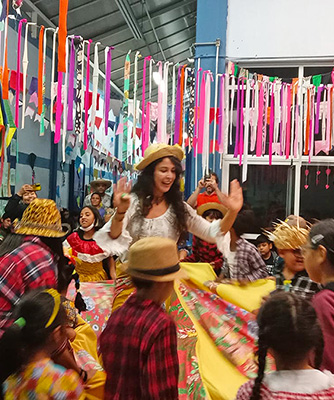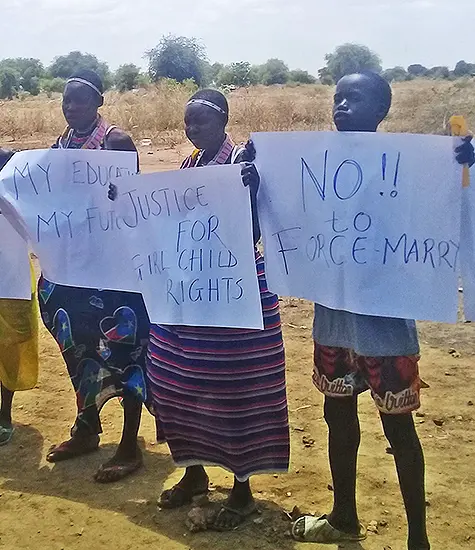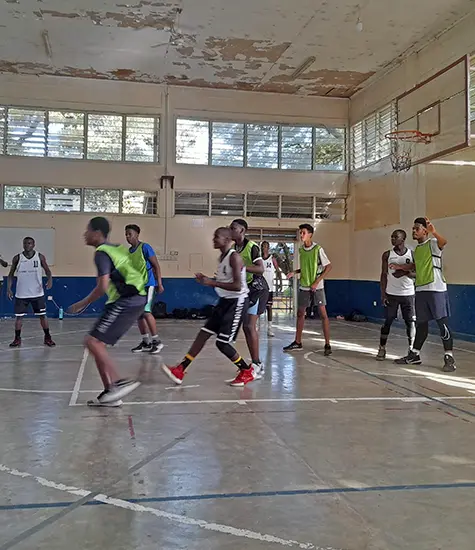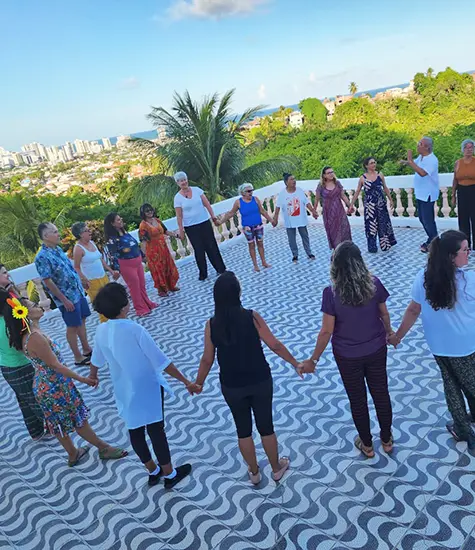
Margarita Durán leads a skirt dance at the Migrant Integration Center in São Paulo.
Four years ago, my friend Eliana, who lives in the favela community of Haiti, where I do ministry, first came up with the idea to do a skirt dance (dança da saia) for our local Festa Junina celebrations.
Eliana is from the northeast of Brazil — from a small rural town called Mortugaba in the state of Bahia. Eliana had heard about the skirt dance years back, but she had never seen it personally.
As we researched it together, we found videos of it online and decided to bring it to life in our communities in São Paulo. To most people in the Haiti community, the skirt dance was completely unknown, and it has been much fun introducing this dance to them during Festa Junina.
The celebrations of Festa Junina are a big deal in Brazil. They are the talk of the town every year in the month of June — and in some places rolling over into July and even August. They were first introduced in the northeast of Brazil by the Portuguese during the colonial period, and they have since spread across the nation. During the celebrations, people dress up in rural clothes.
The festivities are commemorating the feast days of important saints such as St. Anthony (June 13), St. John the Baptist (June 24) and Sts. Peter and Paul (June 29).
The origins of the skirt dance are unclear, but it was also brought to the northeast of Brazil by the Portuguese. The dance is said to represent the solar system, with the woman in the center being the sun, the girls being the planets and the boys being the wind.

Leading girls from the Haiti community in the St. John’s Dance
The residents of the community of Haiti jointly celebrate Festa Junina with those of three other favela communities. They compete with each other, and the residents of Haiti take pride in throwing the best parties. Each year they work to have bigger and better attractions than they had the years before, and they don’t settle for anything less.
The skirt dance is one of several typical dances and attractions that we organize, which also include the famous quadrilha (square dance), a St. John’s dance and the dança da fita (ribbon dance).
I have now organized and participated in the skirt dance three times — in 2019, 2022 and this year. Our communities did not have Festa Junina celebrations during the height of the COVID pandemic in 2020 and 2021.
This year alone, I led Festa Junina skirt dances in four different communities. More and more people have seen the kids in this dance and have fallen in love with it. Although it is simple, it attracts a lot of attention.
I don’t typically take time to rehearse with the kids in advance anymore. It’s fun to just call on and invite the children on the spot and to teach them the moves as we go. The dance is really easy to pick up on because the moves and steps are repetitive. By the middle to the end of the dance, they have mastered it. People love it because it makes for great pictures and videos.
For me, it has been a wonderful way to get involved with the local communities and to strengthen my relationships with the kids and families. I see this involvement as a beautiful way of honoring Brazilian culture.
It’s a colorful, fun, engaging, memorable and different experience, as much for the adults as it is for the kids. I know I will always remember it with much pride and joy.
Videos
Margarita Durán leading skirt dances, St. John’s dances and a ribbon dance during Festa Junina in São Paulo, Brazil.
Photo album
Click on the photos.
Skirt dance
Margarita Durán leads a skirt dance at the Migrant Integration Center in São Paulo, June 2023

















